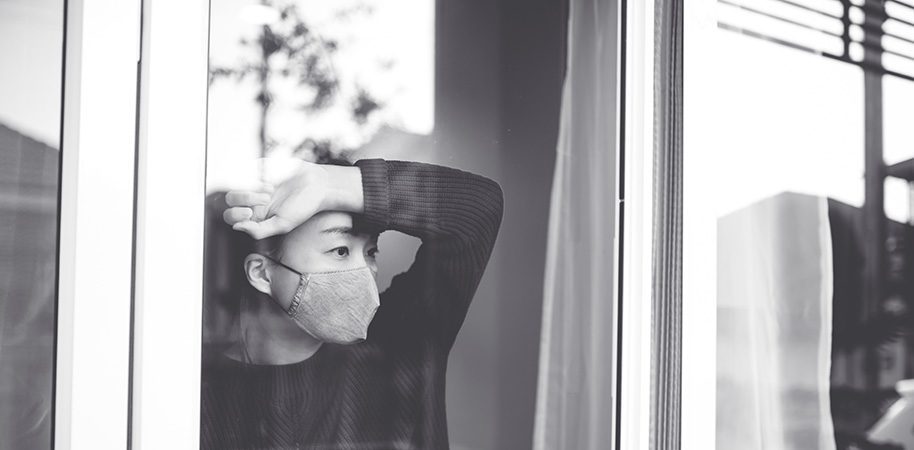The coronavirus, or COVID-19 pandemic, has affected the lives of people across the globe. In addition to a consistently rising worldwide death toll, COVID-19 has already infected over 24 million individuals, disrupted the daily lives of billions, and brought entire countries to a standstill, as months-long quarantines contribute to rising levels of depression. And while local drops in infection rates had previously allowed for an ease in restrictions and stirred hope that this crisis can become manageable, a wave of more recent outbreaks necessitated the reinstatement of tighter restrictions, causing many individuals to experience symptoms of MDD under quarantine. Despite these mounting difficulties, though, there is hope, and steps to be taken to help with second-wave depression. Read on to find out more.
A second wave of COVID-19 infection has been affecting those battling depressive symptoms, with a significant rise in depressive symptoms recorded among both those with preexisting mental health conditions and the general population. Interestingly, the spike in depressive symptoms was recorded during the second wave of coronavirus infections, and not the initial weeks of the first wave. This underscores the fatigue experienced by the general public, whose emotional (and economic) reserves, as well as its sense of stability, have all gradually eroded during this period.
The chances of developing a number of adverse mental health issues, beyond depression, have also been shown to increase following extended periods of isolation and the instability that has come with it. These include symptoms of post-traumatic stress disorder (PTSD), and anxiety-based disorders, which have a high comorbidity rate with depression. The frustration that arises from having one’s daily life repeatedly destabilized can cause bouts of anger and helplessness, while further isolating individuals from loved ones and support networks. Such hits to one’s mental equilibrium can eventually manifest as major depressive disorder, or MDD.
A new concern over desperation is also being seriously assessed in light of the coronavirus pandemic. Experts are now warning that the continued isolation, in addition to feelings of uncertainty, unemployment, and the concrete health threat presented by COVID-19, are likely to lead to 75,000 suicide deaths within the US alone. Depressive symptoms such as hopelessness and a lack of energy could also contribute to these statistics.

An additional concern brought on by the more recent influx in COVID-19 cases is the prolonged closure of both public and private mental health treatment providers. The months-long shutdown of government facilities has caused a delay in primary care, resulting in a drastic increase in mental health treatment waiting periods. As a result, individuals facing depression or other disorders are not getting the evaluations, counseling, monitoring and overall care they need when they most need them. Delays in mail delivery due to budget cuts may also be impacting delivery of mental health medications.
And while sadness, sorrow, and sense of loss are all relevant symptoms of depression, it is the loneliness that most directly links this disorder to situations of prolonged self-isolation. Not only is living under quarantine very likely to induce feelings of loneliness, but it is the sense of being alone in the world—be it with your thoughts, fears or sense of dread from the future—that can be the catalyst to developing an MDD diagnosis. Loneliness has also been shown to weaken your immune system (making you, among other things, more susceptible to the coronavirus), worsen symptoms of dementia, and make it harder to manage stress, making an individual’s time in quarantine even more difficult.
All this is not to say there is nothing to be done. To properly treat individuals battling depression during the second wave of coronavirus, mental health providers have been encouraged to offer more in-house treatments that maintain safety precautions such as wearing masks, disinfecting facilities and equipment, and keeping recommended distance. Switching to online therapy sessions and evaluation methods is also strongly advised, as is considering relying on the online support networks that remain open and available during periods of quarantine.